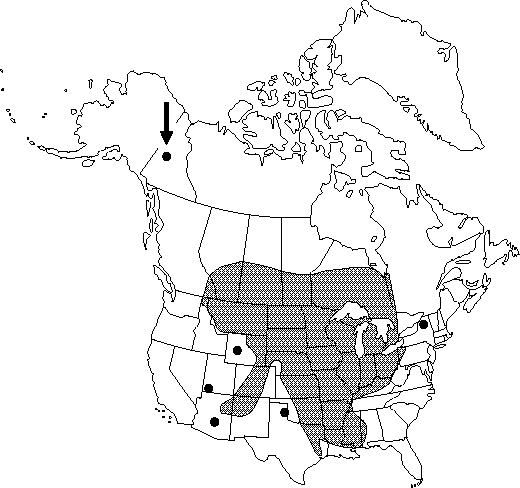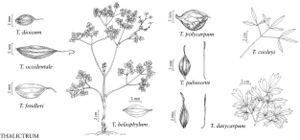Difference between revisions of "Thalictrum dasycarpum"
in Fischer, C. A. Meyer & Avé-Lallemant, Index Sem. Hort. Petrop. 8: 72. 1842.
FNA>Volume Importer |
FNA>Volume Importer |
||
| Line 59: | Line 59: | ||
|publication year=1842 | |publication year=1842 | ||
|special status=Endemic;Selected by author to be illustrated | |special status=Endemic;Selected by author to be illustrated | ||
| − | |source xml=https://jpend@bitbucket.org/aafc-mbb/fna-data-curation.git/src/ | + | |source xml=https://jpend@bitbucket.org/aafc-mbb/fna-data-curation.git/src/f6b125a955440c0872999024f038d74684f65921/coarse_grained_fna_xml/V3/V3_320.xml |
|genus=Thalictrum | |genus=Thalictrum | ||
|section=Thalictrum sect. Leucocoma | |section=Thalictrum sect. Leucocoma | ||
Revision as of 19:53, 24 September 2019
Stems erect, stout, 40-150(-200) cm. Leaves chiefly cauline; basal and proximal cauline petiolate, distal cauline leaves sessile or nearly so; petioles and rachises glabrous or occasionally pubescent and/or stipitate-glandular. Leaf blade: basal and proximal cauline 3-5×-ternately compound; leaflets brownish green to dark green or bright green, ovate to cuneate-obovate, apically undivided or 2-3(-5)-lobed, 15-60 × 8-45 mm, length 0.9-2.6 times width, usually leathery with veins prominent abaxially, margins often revolute, lobe margins entire, surfaces abaxially usually pubescent and/or papillose (i.e., with very minute sessile glands). Inflorescences panicles, apically ± acutely pyramidal, many flowered; peduncles and pedicels usually glabrous, rarely pubescent or stipitate-glandular. Flowers usually unisexual, staminate and pistillate on different plants; sepals 4(-6), whitish, lanceolate, 3-5 mm; filaments white to purplish, filiform, scarcely dilated distally, 2-6.5 mm, flexible; anthers 1-3.6(-4) mm, usually strongly apiculate. Achenes numerous, sessile or nearly sessile; stipe 0-1.1 mm; body ovoid to fusiform, 2-4.6 mm, prominently veined, usually pubescent and/or glandular; beak often dehiscent as fruit matures, ± straight, filiform, 1.5-4.7(-6) mm, about as long as achene body.
Phenology: Flowering late spring–summer (May-late Jul).
Habitat: Deciduous, riparian woods, damp thickets, swamps, wet meadows, and prairies
Elevation: 80-2500 m
Distribution

Alta., B.C., Man., Ont., Que., Sask., Yukon, Ala., Ariz., Ark., Colo., Idaho, Ill., Ind., Iowa, Kans., Ky., La., Mich., Minn., Miss., Mo., Mont., Nebr., N.Mex., N.Y., N.Dak., Ohio, Okla., Pa., S.Dak., Tenn., Tex., Utah., Wis., Wyo.
Discussion
Thalictrum dasycarpum is a variable species similar to, and possibly intergrading with, T. pubescens. Glabrous variants of T. dasycarpum have been treated as T. dasycarpum var. hypoglaucum. Glabrous and glandular (stipitate and papillate) forms are found throughout the range of the species and occur together in some populations.
Native Americans used Thalictrum dasycarpum medicinally to reduce fever, cure cramps, as a stimulant for horses, and as a love charm (D. E. Moerman 1986).
Selected References
None.
